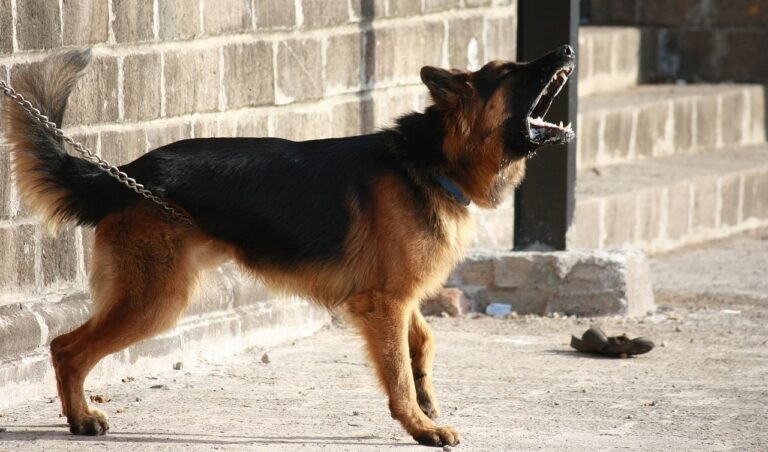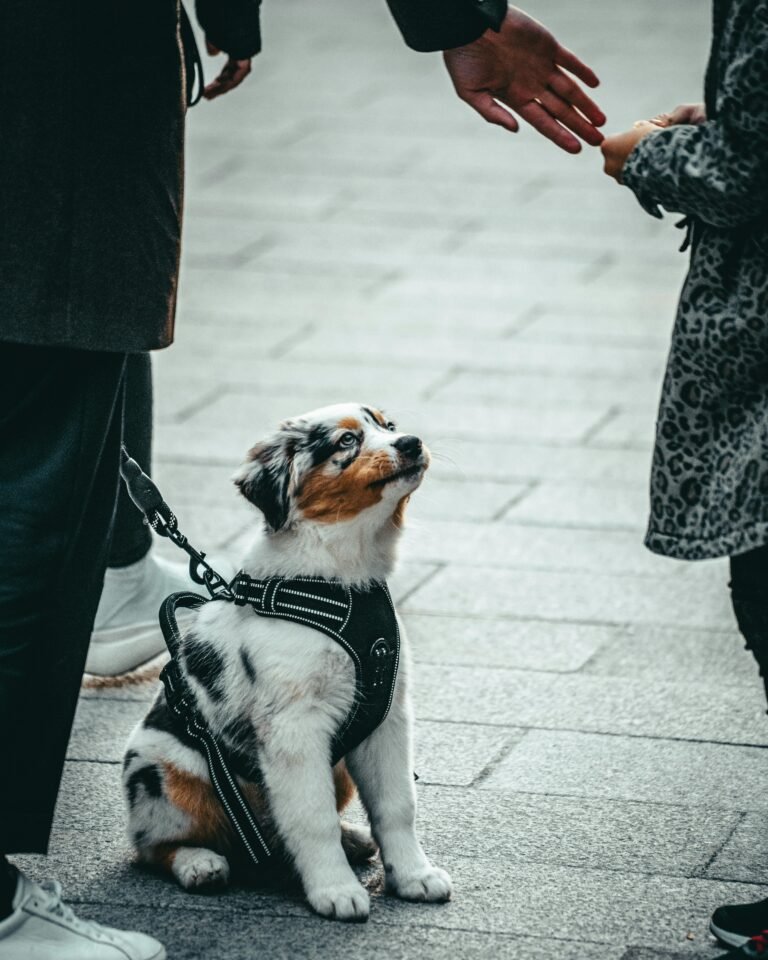Introduction
Positive reinforcement training is one of the most humane and effective ways to teach your dog new behaviors. Instead of punishing mistakes, you focus on rewarding good choices, which builds trust and fosters a strong bond between you and your canine companion. This method is rooted in science: when a behavior is followed by something the dog enjoys, such as a treat or praise, the likelihood of that behavior occurring again increases. Unlike outdated dominance-based techniques, positive reinforcement encourages confidence and problem-solving in dogs. It’s suitable for puppies and adult dogs alike and can be adapted to any skill level, making it perfect for new owners who want to set a solid foundation from the start.
Understanding Positive Reinforcement
Positive reinforcement means adding something desirable immediately after your dog performs a behavior you want to see again. This reward could be a tasty treat, an enthusiastic verbal cue like “Good dog!”, or a favorite toy. Over time, your dog associates the behavior with the positive outcome and will offer it more readily. Equally important is understanding what motivates your individual dog: some dogs are food-driven, while others may work for play or affection. Timing is critical—rewards should be delivered within seconds of the behavior to make the connection clear. Also, consistency in the cue words and reward delivery helps avoid confusion.
Positive reinforcement is the opposite of punishment-based training, which can lead to fear and anxiety. By focusing on what your dog does right, you create a learning environment where your dog feels safe to experiment and succeed. This approach not only teaches obedience but also enhances your dog’s emotional well-being.
Preparing for Training
Before you begin formal training sessions, set yourself and your dog up for success by preparing the environment and supplies. Choose a quiet area free of distractions, especially when introducing new commands. Make sure your dog has eaten an appropriate amount but is still food-motivated—training right after a big meal might reduce interest in treats. Gather a variety of rewards so you can vary them to keep your dog engaged.
You’ll need:
- High-value treats: Small, soft treats that your dog loves will keep them interested. Avoid large or hard treats that take time to chew.
- Clicker (optional): A clicker is a small device that makes a distinct sound to mark the exact moment your dog performs the desired behavior. It can improve timing and clarity.
- Leash and harness: Even in a fenced yard, a leash helps guide your dog and prevents them from wandering off during early training.
- Patience and a positive attitude: Dogs pick up on our emotions. Go into training with enthusiasm and a willingness to adapt.
Keep sessions short—five to ten minutes is ideal for puppies or easily distracted dogs. End on a positive note so your dog looks forward to the next session.
Teaching Basic Commands
Teaching basic commands using positive reinforcement lays the groundwork for good manners and communication. Here’s how to train some essential cues:
Sit
- Hold a treat close to your dog’s nose.
- Slowly move your hand up. As your dog follows the treat with their head, their bottom will naturally lower.
- As soon as they sit, say “Sit” and give the treat along with praise.
Stay
- Ask your dog to sit or lie down.
- Open your palm in front of them and say “Stay.”
- Take a small step back. If they remain in place, mark the behavior (with a click or a “Yes!”) and reward. Gradually increase the distance and duration, always releasing your dog with a phrase like “OK” when finished.
Come
- Use a leash for safety when starting. Crouch down, open your arms, and say your dog’s name followed by “Come!”
- When they move toward you, praise and reward.
- Avoid calling your dog for something unpleasant (like bath time) until this command is solid; you don’t want them to associate “Come” with negative experiences.
Down
- Ask your dog to sit.
- Hold a treat to their nose, then slowly lower your hand to the ground between their paws.
- When your dog follows the treat into a lying position, say “Down” and reward them.
Teaching these commands with patience and clear cues strengthens your communication and can prevent many behavior problems.
Clicker Training
Clicker training is a subset of positive reinforcement that uses a small handheld device to make a clicking sound. This “click” marks the exact moment your dog performs the desired behavior and acts as a promise of a reward. Start by “charging” the clicker: click and immediately give a treat, repeating this several times until your dog looks for the treat when they hear the click. Once charged, use the clicker to mark behaviors like sitting, lying down, or making eye contact.
Clicker training offers precision, which helps your dog understand exactly what earned the reward. It is particularly useful for shaping complex behaviors, such as rolling over or weaving through agility poles, where you can reward successive approximations of the final behavior. Always follow a click with a reward so the clicker retains its meaning.
Addressing Behavioral Issues
Positive reinforcement isn’t just for teaching new tricks; it’s also effective for addressing unwanted behaviors. Instead of scolding your dog, focus on teaching them an alternative behavior and rewarding it. Here are some common issues and tips:
- Jumping on people: Teach your dog to sit when greeting. Ask visitors to ignore your dog until all four paws are on the ground. Reward the sit with treats and attention.
- Excessive barking: Determine why your dog barks—boredom, fear, or attention-seeking. Provide mental stimulation through toys and training. Reward quiet moments and redirect to another activity.
- Chewing household items: Puppies explore the world with their mouths, and chewing relieves teething discomfort. Provide plenty of chew toys and praise your dog for using them. If you catch them chewing something off-limits, calmly redirect them to an appropriate toy and reward.
- Pulling on the leash: Stop walking when your dog pulls. Once the leash is slack, resume walking. Reward your dog for staying by your side. A front-clip harness can reduce pulling while you train.
Remember, patience and consistency are key. If a behavior persists, consult a professional trainer for personalized guidance.
Consistency and Patience
Dogs thrive when they understand what is expected of them. Consistency in cues, rewards, and boundaries helps your dog learn faster. Ensure that everyone in the household uses the same commands and rules—if one family member allows couch cuddles and another doesn’t, your dog will be confused. Keep training sessions frequent but short, and practice in different environments (home, park, friend’s yard) to generalize the behavior. Celebrate small successes and stay patient; setbacks are part of the learning process, especially for young or newly adopted dogs. A calm, encouraging demeanor will make training enjoyable for both of you.
Advanced Training and Socialization
Once your dog has mastered basic commands, you can explore more advanced training. Tricks like “roll over,” “spin,” and “paw” provide mental stimulation and strengthen your bond. You might also try agility, rally obedience, or nose work. These activities tap into your dog’s natural instincts and provide excellent physical exercise.
Socialization is equally important. Expose your dog to different people, dogs, sounds, and environments in a positive, controlled way. Reward calm behavior around new experiences. Proper socialization reduces fear and aggression and helps your dog become a confident companion.
Conclusion
Positive reinforcement training empowers you to teach your dog with kindness and clarity. By rewarding desired behaviors and setting clear expectations, you build trust and a lasting relationship. Training is a lifelong process; continue to reinforce good manners and introduce new skills as your dog grows. Whether you’re working on basic cues or advanced tricks, remember that every dog learns at their own pace. Celebrate the journey and enjoy the unique connection you’re creating.
Additional Tips for Success
- End on a high note: Always finish training sessions with an easy command your dog knows well to leave them feeling successful.
- Use varied rewards: Mix up treats, praise, and play to keep sessions exciting.
- Be aware of body language: Your dog communicates through posture, tail position, and ear movement. Recognize signs of stress and adjust training accordingly.
- Short sessions: Multiple short sessions throughout the day are more effective than one long session.
- Generalize commands: Practice in different rooms, outdoors, and around mild distractions.
- Avoid repeating cues: Saying a command once teaches your dog to respond the first time; repeating can teach them to ignore you.
- Keep records: Note what works best for your dog and track progress.
- Seek professional help when needed: A certified positive reinforcement trainer can offer personalized support for challenging behaviors.






